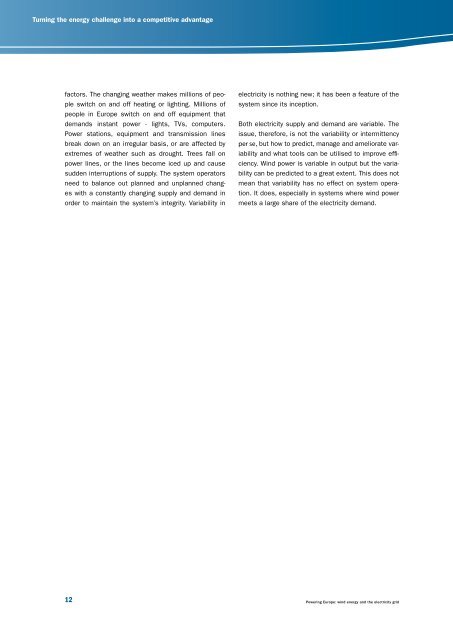Powering Europe - European Wind Energy Association
Powering Europe - European Wind Energy Association
Powering Europe - European Wind Energy Association
Create successful ePaper yourself
Turn your PDF publications into a flip-book with our unique Google optimized e-Paper software.
turningtheenergychallengeintoacompetitiveadvantage<br />
factors. The changing weather makes millions of people<br />
switch on and off heating or lighting. Millions of<br />
people in <strong>Europe</strong> switch on and off equipment that<br />
demands instant power - lights, TVs, computers.<br />
Power stations, equipment and transmission lines<br />
break down on an irregular basis, or are affected by<br />
extremes of weather such as drought. Trees fall on<br />
power lines, or the lines become iced up and cause<br />
sudden interruptions of supply. The system operators<br />
need to balance out planned and unplanned changes<br />
with a constantly changing supply and demand in<br />
order to maintain the system’s integrity. Variability in<br />
12<br />
electricity is nothing new; it has been a feature of the<br />
system since its inception.<br />
Both electricity supply and demand are variable. The<br />
issue, therefore, is not the variability or intermittency<br />
per se, but how to predict, manage and ameliorate variability<br />
and what tools can be utilised to improve efficiency.<br />
<strong>Wind</strong> power is variable in output but the variability<br />
can be predicted to a great extent. This does not<br />
mean that variability has no effect on system operation.<br />
It does, especially in systems where wind power<br />
meets a large share of the electricity demand.<br />
<strong>Powering</strong> <strong>Europe</strong>: wind energy and the electricity grid

















